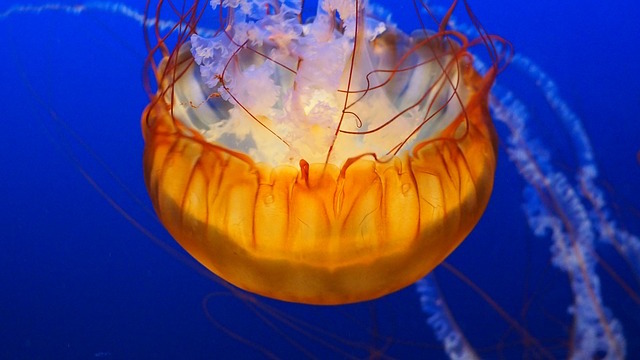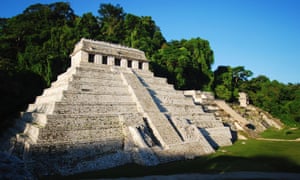via Big Think by Lori Chandler

The trope of women hating on other women is frequently played out on our movie screens and think pieces du jour. A recent New York Times opinion piece postulated that cattiness comes from hating oneself, which resonates as an accurate analysis: Insecurity breeds contempt. Still, it’s natural that we must compete with one another for evolutionary purposes, to attract the best mate, even as our culture enforced it’s not lady-like. What do you do when you live in a society that tells us it’s not nice to compete, but your instincts are saying that you must?
Continue reading and you will discover that the opinion piece referred to above is over a year old but heck, who said interesting items also had to be contemporary?
===================================
via Boing Boing by Carla Sinclair

Venom expert Dr. Christie Wilcox debunks three popular myths about stings and bites from toxic creatures: jellyfish, snakes and spiders.
Continue reading
===================================
via The National Archives blog by Benjamin Trowbridge
‘What is in that word honour? Air. A trim reckoning! Who hath it? He that died o’ Wednesday. Doth he feel it? No. Doth he hear it? No. Is it insensible then? Yea to the dead…’
This speech from Henry IV Part 1 uttered by Shakespeare’s much loved character Falstaff should hopefully amuse even the most novice of Shakespeare lovers. As a pillar of self-interest with cowardly tendencies and no regard for honour, Falstaff’s antihero qualities have been enjoyed by audiences past and present. It seems that no act of ignominy or debasement fazes him!
Continue reading
===================================
via OUP Blog by Eric Scerri
Our story has to begin somewhere and why not with the Manchester schoolteacher John Dalton who revived the atomic theory of the ancient Greek philosophers? In addition to supposing that the ultimate components of all matter were atoms, Dalton set about putting this idea on a quantitative foundation.
He published the first list in which he compared the weights of the atoms of all the elements that were known at the time. Dalton did this by assigning a weight of one unit to the lightest element, namely hydrogen. Next he assumed that a compound like water consisted of one atom of hydrogen and one of oxygen. By appealing to data on how much hydrogen combines chemically with how much oxygen, he arrived at the weight of one atom of oxygen relative to the weight of a hydrogen atom and so on for all the other elements. Of course the formula of water is now known as “H2O” rather than “HO” but this was already a good start.
Continue reading
===================================
via Boing Boing by Jason Weisberger

By the late 1980s an automotive feature that I love, colloquially known as Vent Windows, or Wing Windows, or Bat Wings had largely been phased out.
Continue reading
===================================
via OUP Blog by Lauri Lu

The thirteenth of August [2016] marks the 150th birth and the 70th death anniversary of legendary science fiction writer H.G. Wells. A prophet of modern progress, he accurately predicted several historical milestones, from the World War II, nuclear weapons, to Wikipedia. His humble origins gave him insight into class issues, and his studies in biology propelled him to become one of the greatest thinkers and observers of his time. Combined with a flair for story-telling, Herbert George Wells dominated and defines the science fiction genre till this day. His 1895 published novel, The Time Machine, propelled him to fame and inspired studies and speculation from later generations of physicists and theorists.
Continue reading
===================================
via RBFirehose: Feargus O'Sullivan in The Atlantic
With over 150,000 pictures now mapped across the city, a new digital photo archive of the city of London is so rich in content it’s almost too much to cope with.
Launched last week, Collage, The London Picture Map allows you to trace London’s visual history street by street. Supported by the City of London Corporation, it’s the result of two full years of digitizing and mapping images from the London Metropolitan Archive and the Guildhall Art Gallery, which together possess the largest collection of London images in the world.
Continue reading
===================================
via Boing Boing by Mark Frauenfelder
Kudos to this guy for all the work he had to do to come up with a way to park his car. He is stuck with the particular car model for life, though, because it fits like a glove.
Check it out here
===================================
via The Guardian by Associated Press in Mexico City

The Temple of Inscriptions at the archaeological site of Palenque, in the state of Chiapas, where archaeologists found a network of underground water canals dating from the seventh century. Photograph: INAH/AFP/Getty Images
Archaeologists find seventh century system below Palenque, which houses tomb of Pakal whose sarcophagus some erroneously believe depicts him in spaceship.
Continue reading
===================================
Can the World Sustain 9 Billion People by 2050?
via Big Think by Philip Perry

The world’s population is topsy-turvy, and its exponential and uneven growth could have disastrous consequences if we aren’t ready for it. Humanity recently hit a benchmark, a population of 7.9 billion in 2013. It is expected to reach 8.5 billion by 2030, and 9.6 billion by 2050. If that weren’t enough, consider 11.2 billion in 2100. Most of the growth is supposed to come from nine specific countries: India, Pakistan, the Democratic Republic of the Congo, Ethiopia, Tanzania, Nigeria, the United States, and Indonesia.
Continue reading
via Big Think by Philip Perry

The world’s population is topsy-turvy, and its exponential and uneven growth could have disastrous consequences if we aren’t ready for it. Humanity recently hit a benchmark, a population of 7.9 billion in 2013. It is expected to reach 8.5 billion by 2030, and 9.6 billion by 2050. If that weren’t enough, consider 11.2 billion in 2100. Most of the growth is supposed to come from nine specific countries: India, Pakistan, the Democratic Republic of the Congo, Ethiopia, Tanzania, Nigeria, the United States, and Indonesia.
Continue reading
No comments:
Post a Comment